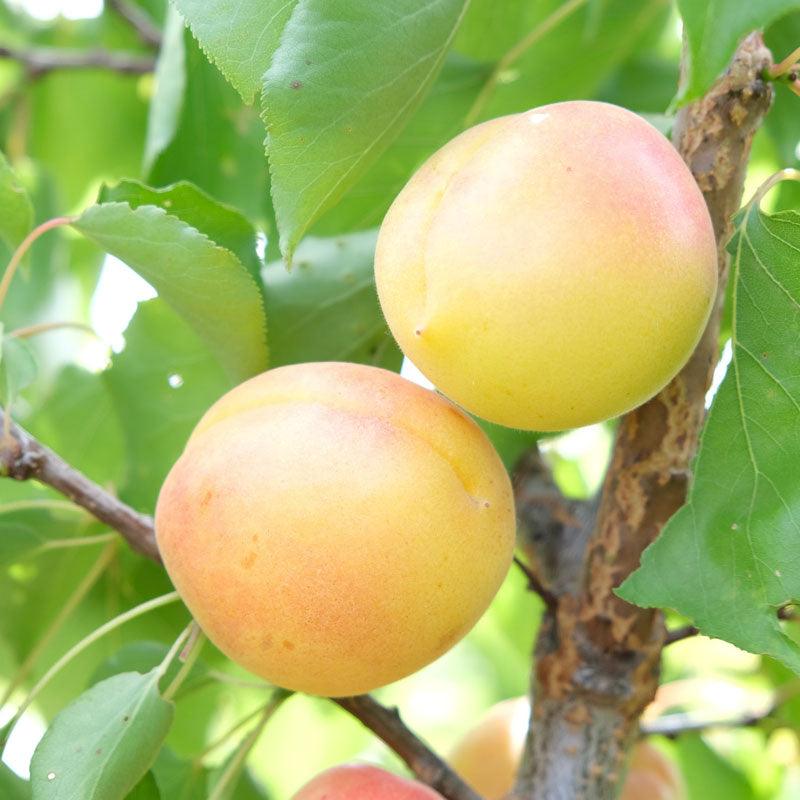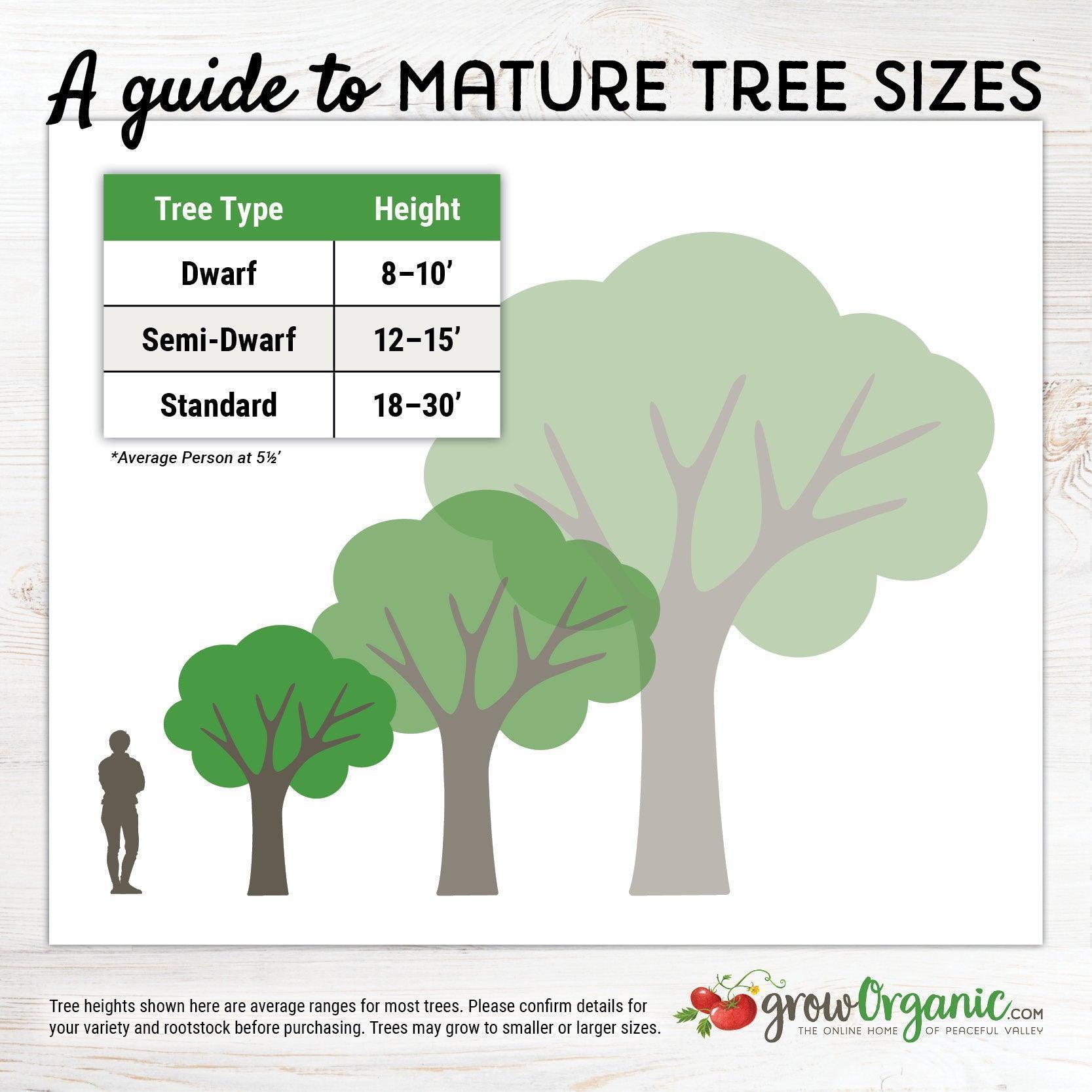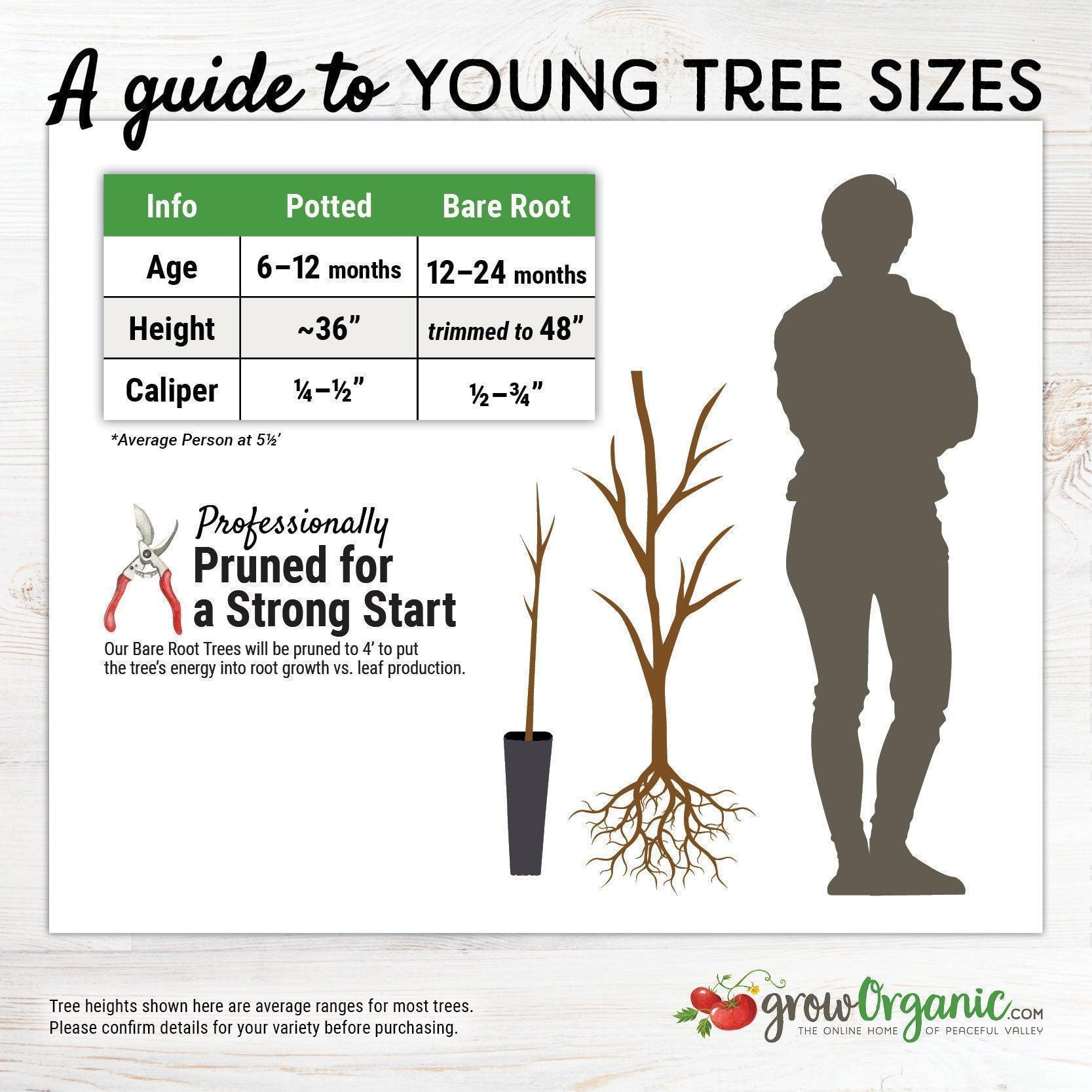Item Number: FT347
White Knockout Apricot Tree
Unique white flesh, exceptional sweetness.
The White Knockout Apricot tree is a standout variety, producing sweet, juicy apricots with pale, creamy skin and aromatic, tender flesh. These medium-sized fruits are perfect for fresh eating, making jams, or adding a unique twist to baked goods. Thriving in full sun and well-draining soil, this semi-dwarf tree requires moderate chill hours and is self-fruitful, making it a reliable and low-maintenance choice for home gardeners. The tree blooms with showy white flowers in early spring, adding ornamental beauty to your garden. Ripening in mid-to-late season, White Knockout Apricots deliver a consistently delicious harvest, ideal for those seeking a unique and flavorful addition to their orchard.
Semi-Dwarf on Nemaguard rootstock.
Semi-dwarf on .
- Zones: 6-9
- Chill hours: 400-600
- Bloom Time:
- Harvest: May-June
- Looks: White flesh dessert-quality apricot
- Personality: Intensely sweet and rich apricot flavor
- Pollination: Self-fruitful, larger crop if planted with another apricot
This tree thrives in USDA cold hardiness zones 6-9 and requires 400 to 600 chill hours. As one of the finest flavored apricots, the white apricots produced by this variety are a standout among apricot trees. Its cold hardy nature allows it to adapt well to moderate climates, making it suitable for both northern and southern hemispheres. This exceptional tree is a valuable addition to any collection of stone fruits.
Planting Your White Knockout Apricot Tree
Choose a sunny location with well-drained soils and fertile soil. The soil pH should be between 6.0 and 7.0. Plant the tree in a hole twice as wide as the root ball, ensuring the graft union remains above the soil line. Be mindful of USDA hardiness zones to ensure successful growth and protect your tree from late frost. Water thoroughly and mulch to retain moisture.
Watering and Irrigation
Consistent moisture is key, especially during the tree’s early years. Water deeply once a week, adjusting for climate conditions. Regular watering is essential for optimal fruit production as the tree matures.
Pruning for Health and Productivity
Prune the tree in late winter or early spring to shape it and remove dead or diseased wood. An open-center or vase-shaped pruning style promotes better sunlight exposure and air circulation, reducing disease risk and enhancing fruit quality.
Fertilization for Vigorous Growth
Apply a fruit tree fertilizer in early spring and a second dose in mid-summer to support fruit development. Follow the manufacturer’s guidelines to avoid over-fertilization, which can negatively impact fruit production.
Pollination and Blooming
The White Knockout Apricot Tree is self-fruitful, but planting a second apricot tree nearby can increase fruit yield. This variety is renowned for producing the finest flavored apricot, specifically white apricots. The tree blooms in early spring, showcasing beautiful blossoms that precede the fruit. Additionally, it is known for being cold hardy, making it suitable for a variety of growing conditions.
Harvesting Your White Knockout Apricots
Harvest typically occurs from early June to early August. The apricots are ready when they have a full color and slight softness, indicating they are firm ripe. The white flesh and smooth skin make these apricots perfect for fresh eating or various culinary uses. This variety is also known for being winter hardy, thriving in areas with mild winters and producing fruit in the early summer.
Flavor Profile and Culinary Uses
The White Knockout Apricot is known for its intensely sweet and rich flavor, making it the finest flavored apricot. This variety produces soft ripe white apricots that are ideal for fresh consumption. Additionally, it can be used in desserts, jams, and other recipes, adding versatility to your garden harvest of apricot trees. For those seeking diversity, the Royal Rosa Apricot is another excellent option to consider for your collection of sweet fruit.
Pest and Disease Management
Regular monitoring for pests like aphids and scale insects is crucial for protecting your white apricots. Use insecticidal soap or neem oil to control infestations, and consider introducing beneficial insects. Additionally, pruning regularly and applying copper-based fungicide during the dormant season can help prevent fungal diseases, ensuring your apricot varieties thrive and produce high-quality freestone fruit.
Conclusion
Growing a White Knockout Apricot Tree is a rewarding experience that offers delicious white apricots and adds beauty to your garden. With proper care, including watering, pruning, and pest management, you can enjoy a bountiful harvest of sweet, flavorful apricot trees. The red blush on the fruit enhances its visual appeal, making this semi-dwarf tree a standout choice for any home garden, whether in the northern or southern hemispheres.
Why Buy White Knockout Apricot Tree From Us?
Buy the White Knockout Apricot Tree from us to enjoy a top-quality addition to your garden. This self-fruitful variety produces large fruit with a sweet flavor, perfect for eating fresh or using in desserts. Adaptable to USDA zones and thriving in full sun, these potted trees are a fantastic choice for producing white apricots with a delightful orange cheek and a firm, ripe texture. With their beautiful bloom and fast-growing nature, they also make excellent small shade trees, enriching your landscape with many varieties of fruit, including plums and peaches.
Visit our Fruit Tree Central for a listing of all our fruit tree videos and articles.
Visit Tree Characteristics for a listing of all our fruit & nut tree growing characteristics.
For more information about different types of rootstocks and how they influence tree size and growth, see our Tree Rootstock Characteristics Chart.



Check Your Zone Compatibility:
Compatible with your zone.
Growing Zone for

Our Guarantee To You
Since 1976, we've served our customers at every stage of growing. Please contact us at any time. We are happy to support and assist you.
Shipping Information
Shipping Information
Cannot ship to the following states: HI, AK, PR, GU, VI
Shipping Weight: 5.0 lb
Dimensions: 47.5"L x 7.3"W x 2.75"H
Features
Features
- Bare Root
- Self-fruitful
Characteristics
Characteristics
Planting & Care
Planting & Care
Useful Information
Useful Information
Guarantee
Guarantee
Limited Dormant Tree & Plant Guarantee
* Claim deadline is June 15th
We guarantee that your dormant tree or plant will arrive in good, viable condition. If your tree arrives in substandard condition, notify us within 3 days of delivery. Please email pictures of the box, inside packaging, the tree and its roots to helpdesk@groworganic.com. We will investigate your claim and process a request to exchange or refund the damaged product.
If your dormant tree or plant has not grown new leaves by June 15th, you may be eligible for our Limited Dormant Tree & Plant Guarantee. This guarantee provides for a store credit for the purchase price of the tree, excluding shipping. Please see the Instructions below.
Important Dates:
- April 1st Dormant trees/plants must be planted in the ground
- May 15th Perform scratch test, if no new leaves have grown
- June 15th Deadline to apply for a dormant tree/plant credit
All required documentation must be received by June 15th for your claim to be considered. Claims or documentation received after June 15th will be denied, without exception. Instructions listed below
Terms and Conditions
We cannot guarantee that your tree or plant will remain alive and healthy after it is received, or bear fruit as there are too many variables in your environment that are beyond our control (i.e. soil preparation, weed and pest control, proper irrigation, chill hours, compatible hardiness for your growing zone, proper choice of pollinator, extreme weather, rodent damage, disease, etc.).
We cannot guarantee that we will be able to provide a replacement tree/plant of the same species either that same growing season or in future years. Customers are responsible for all shipping fees associated with replacement trees and plants.
If we determine that the tree you purchased directly from us is not viable, we will issue you a store credit (not a refund) for the purchase price of the affected dormant tree or plant. Shipping is not included in the dormant tree/plant guarantee. Store credits can be used to purchase any product we sell and are valid for use only until July 1st of the following year.
Historically, 98% of our dormant trees and plants grow and thrive when they have been cared for and planted using our growing guides. Dormant trees and plants must be planted in the ground by April 1st in order to be eligible for credit. If the ground in your area is still frozen solid, you may temporarily plant your tree or plant in a pot.
Potted, non-dormant trees or plants are excluded from this guarantee as they are not dormant at the time of shipment. Evergreen trees such as citrus, avocado and olive trees are not available for credit under the Dormant Tree and Plant Guarantee.
Instructions
We guarantee that your dormant fruit tree or plant will leaf out, if you care for it according to our growing guides. In the unlikely event that your dormant tree or plant does not have leaves by May 15th, follow these simple steps to apply for a store credit:
Before you call or email, please perform a “scratch test” to determine if the tree or plant is still alive. This video shows how to check for live tissue under the bark. Scratch tests need to be done a few inches above and below the graft.
Green Cambium Layer / Living Trees
If the cambium layer under the bark is green, give your tree a little more time. It is still alive, but hasn’t come out of dormancy yet. Check to make sure that it is getting the right amount of deep root water, enough sunlight and that the weather is warm enough for that type of tree/plant to come out of dormancy. Every tree has its own personality and will come out of dormancy at different times. Be sure to submit the required documentation listed below by June 15th, if it doesn’t grow leaves.
Brown Cambium Layer / Dead Trees
If the scratch test shows a brown cambium layer or if your dormant tree/plant doesn’t have leaves by June 1st, please email us at helpdesk@groworganic.com. All required documentation listed below must be received by June 15th for your claim to be considered. To be considered for the guarantee claim, all required documentation must be received by June 15th. Incomplete submissions will be denied.
Required Documentation
- Order number
- Name of dormant tree/plant and the quantity affected
- Photos of each tree or plant showing:
- The roots (tree or plant must be pulled out of the ground)
- The scratch test areas
- The entire tree/plant
We reserve the right to not issue credit for items that have already been replaced. We also reserve the right to require photographic evidence that the tree/plant was not killed by root rot, rodent or mechanical damage.
Share
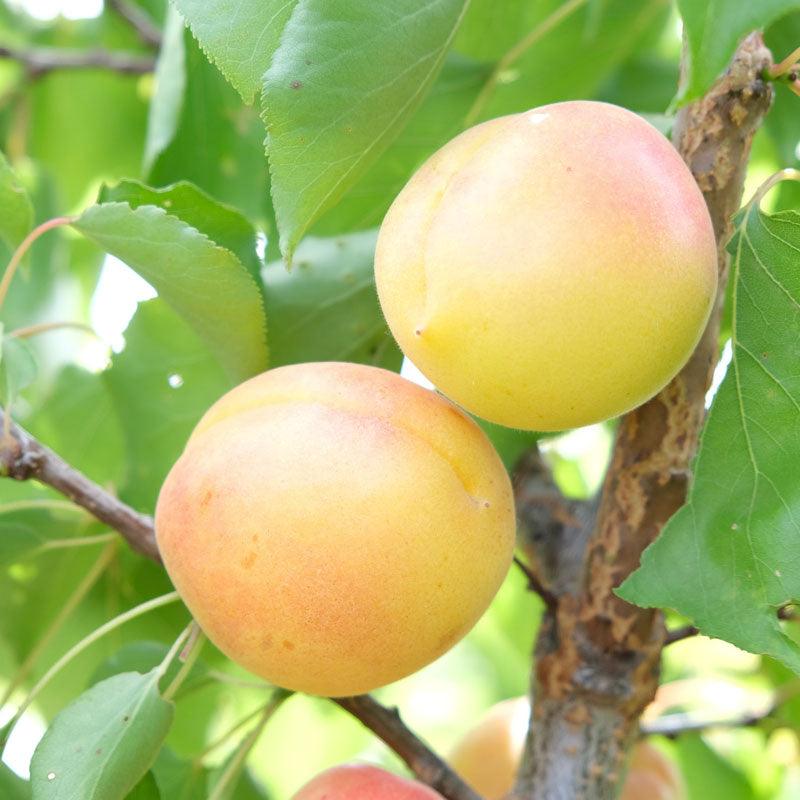
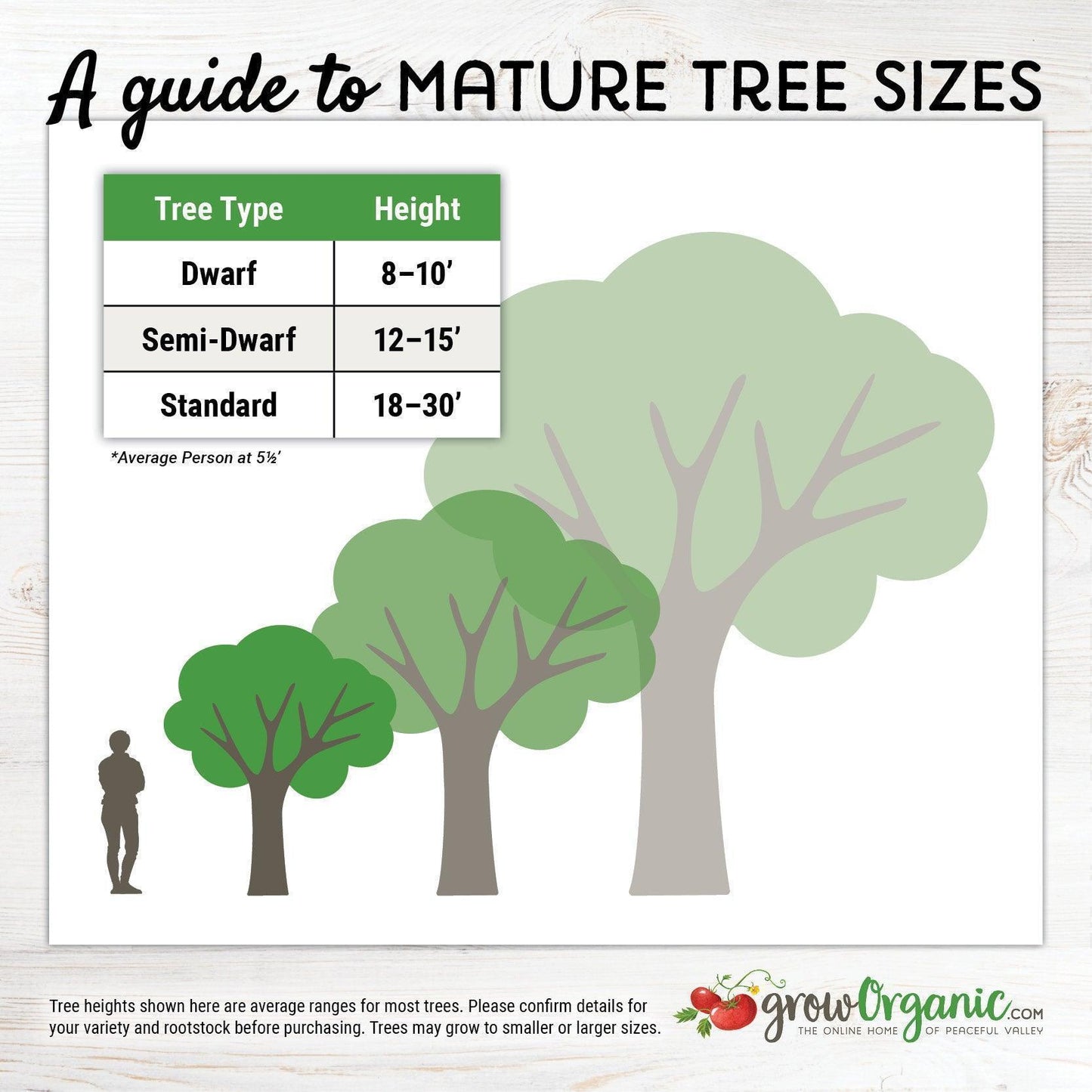
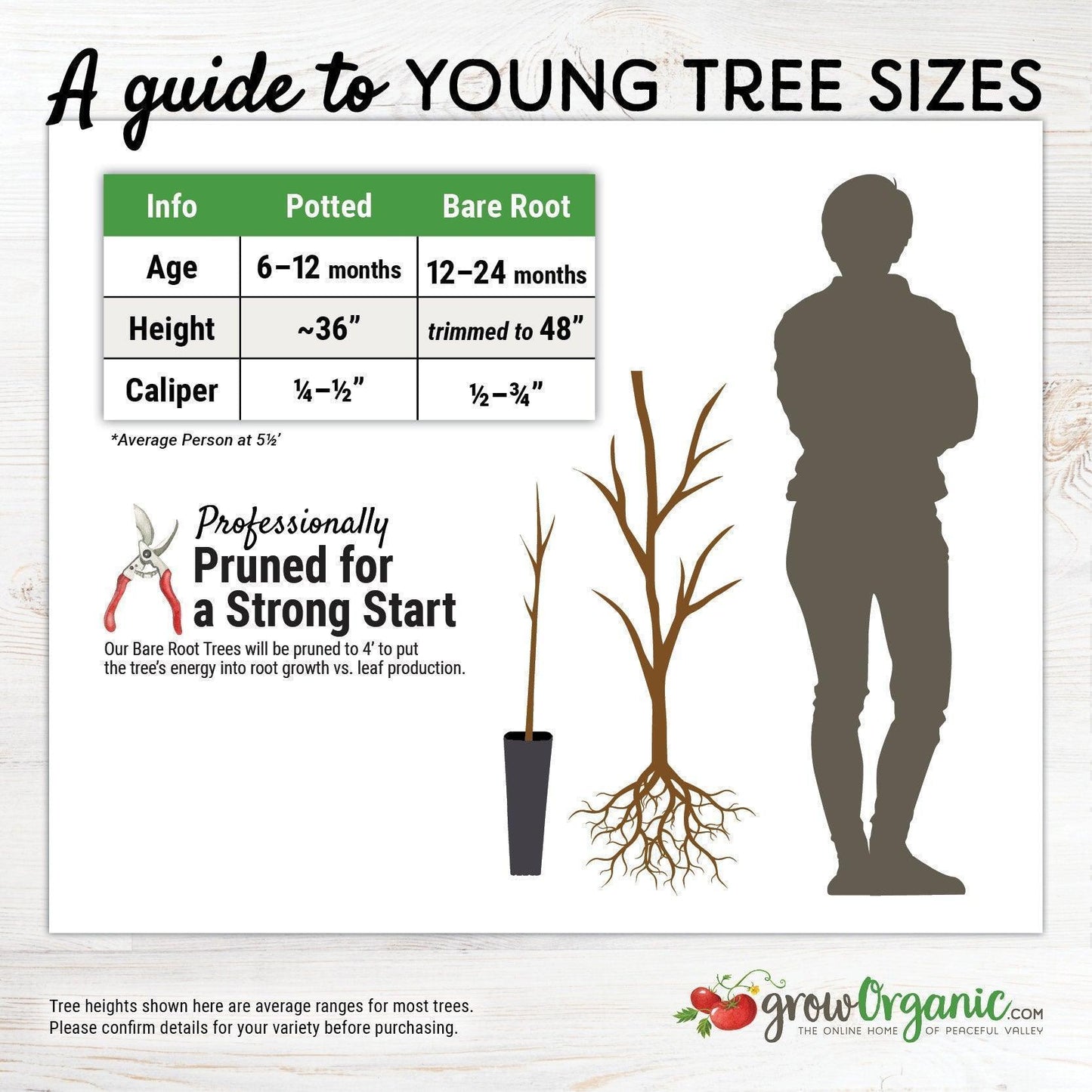
This apricot tree was part of an order consisted of 6 different bare root fruit trees. Of all the trees, this one had a few leaves on it when I unboxed the box. It's been a month and the tree has many more leaves so it is taking root. I should come back in a few years to give a full review. but so far I'm happy with the trees I received and overall order handling.
The tree I received was in very good condition, had been well trimmed and was full of buds! Looked healthy, and the roots were NOT over trimmed! I just recently planted it so I cannot speak to growth progress or fruit yet, but I have high hopes. The reason I gave 4 stars, is because, although the tree was packaged well, UPS was not kind and did not treat it well. The box was just about bent in half upon arrival and I was worried about the tree, but I did not see any damage, thankfully. I do think the company should consider using another carrier - just a suggestion because fruit trees are precious!

